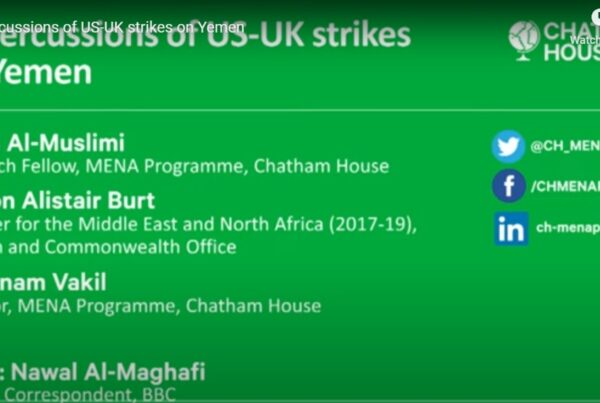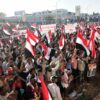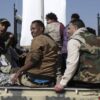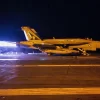Pessimists think of Yemen as the new Afghanistan or Somalia, while the optimists’ tend to see it as the new Egypt, or better yet, Tunisia. Situated somewhere between the two, there is also an opinion of growing prominence that recognizes in the new Yemen an awful lot of Lebanon. Most notably, Yemen, like Lebanon, is a proxy field for the region’s hottest “cold war”, between the Middle East’s two titans of theocracy: The Kingdom of Saudi Arabia (KSA) and the Islamic Republic of Iran. This in itself is not new, but the new political landscape shaping Yemen has upped its significance for both sides.
Shortly after the Iranian revolution in 1979 the competition between KSA and Iran began in earnest for influence in, and over, Yemen. The regional rivals set about inciting strife between Yemen’s two main sects, Shafai Sunnis and Zaidi Shias, who had previously enjoyed a largely moderate and tolerant coexistence with each other.
In the 1980s, Saudi Arabia began funding what they called “The Scientific Institutions” which taught their Sunni students an extremist and intolerant brand of Salafi Islam, in an effort to marginalize Zaidi influence in Yemen. Recently ousted President Ali Abdullah Saleh was also very adept at manipulating Saudi fears of Iranian influence to extract bundles of cash from the KSA’s monarchs, even to the point of empowering Iran’s allies in Yemen whenever the Saudi cash would wane.
Sectarian tension was inflamed in the last decade through six wars — between 2004 and 2009 — in the Saada governorate between the Yemeni army and the Al Houthi group, led by Abdulmalik al-Houthi, a prominent Zaidi figure. Thought the causes of the conflicts were largely political, the sixth war had a massively negative impact on Zaidi-Shafai relations. KSA forces entered the affray on the side of the Yemeni army after several incidents along the border between Saudi troops and Houthi fighters. The Houthis called the Saudis invaders and the Saudis claimed Iran had manipulated the Houthis to instigate the border classes. What is more, local and regional media expounded vitriol according to their allegiance to either KSA or Iran.
The government in Sanaa has long accused the Houthis of being Iranian-funded and armed; it has never produced any evidence of this. While it is undeniable that the Houthis have been well supported in Iranian media coverage Houthi spokesman Houhsi Muhamemd al-Emad denied in a recent interview with a Yemeni newspaper that Iranian support extended to financial assistance. He added that Saudi interference in Yemen should also be condemned. KSA has been paying monthly salaries to hundreds of Yemeni tribal sheikhs and other prominent figures via a “The Special Committee”, which the KSA itself formed, and which many Yemenis regard as simply a vehicle to buy loyalty.
With the beginning of the Yemeni uprisings early 2011, the Houthis surprised all sides and joined the protests in the streets, peacefully standing side-by-side with their historical enemies: the Salafis and Muslim Brotherhood in Yemen. Such a move by the Houthis was considered pragmatic and welcomed by many other Yemenis, especially given the Houthis’ cache of arms. Within months, however, violence broke out anew between minority Wahhabi Salafis and Houthis in Saada, which by then was fully Houthi controlled, and more recently at the Dar Al Hadith religious school in Saada (among those set up by KSA in the 1980s). The violence has also spread to the neighboring Haja governorate.
Now, with Iranian influence taking a battering in Syria, the Yemeni arena looks more promising for them. Saudi Arabia’s influence in Yemen is also in retreat for two reasons: Firstly, Saudi Arabia has stuck by the old, traditional elites and political actors whose power at home has been rocked by the uprisings. Secondly, the Houthis and Iran are establishing partnerships with leftist and liberals who are wary of the power the Sunni Islamists will have in the country post-Saleh. These relationships have been publicized during the many conferences and workshops Iran has held with Yemeni actors inside and outside the country.
Thus, while the proxy war between Iran and KSA in the Levant may seem to have swung toward the advantage of the latter, on the KSA’s own southern doorstep the “cold war” pendulum seems to be swinging the other way.








